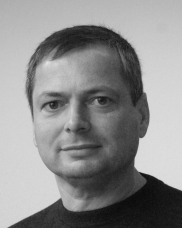Main content
Top content
Projekt P5/2
Titel
Nonequilibrium Transport and Thermodynamics in Driven Lattice Gases
Projektleiter
- Prof. Dr. Philipp Maass (Universität Osnabrück)
 |
Kurzbeschreibung
Driven lattice gases provide conceptually simple models for studying transport of interacting particles far from equilibrium. In these models, particles move between neighboring lattice sites by performing transitions that frequently result from a coarse-graining of primarily space-continuous movements. Lattice gas models can be applied to various nonequilibrium processes on molecular scales, as, for example, ion transport through cell membranes, motion of molecules through nanopores, and transport of motor proteins along filaments in cells. This research project comprises three parts, in which current problems of the nonequilibrium physics of driven latttice gases and their connection to space-continuous dynamics are tackled.
In the first part, lattice gas models are considered, where particles can be in different internal states. For this extended class of models, particle densities and currents in nonequilibrium states shall be determined based on time-dependent density functional theory. The quality of the theoretical prediction is checked against kinetic Monte Carlo simulations. In open systems exchanging particles with their environment, phase transitions between nonequilibrium steady states shall be investigated. At these phase transitions, mean occupation numbers of internal states change abruptly or their dependence on control parameters. A further focus is directed towards the question, whether effects of a finite particle size, as seen in continuous space dynamics, can be captured in lattice gas models.
In the second part, currents are investigated, which due to particle interactions flow against an external driving. This driving can be a constant drag or a time-dependent forcing. The unexpected current direction is often referred to as current reversal. Current reversals have been found in systems with both discrete and continuous space dynamics and their origin is partly puzzling. A theoretical treatment based on calculations of total entropy production shall explain their occurrence on a common footing.
The third part concerns the change of different types of currents, as those of particles, energy and heat, under slight variations of external driving forces. It shall be explored, whether certain nonequilibrium states, where the response of different types of currents exhibits a symmetry, have a particular meaning in terms of thermodynamic properties.

